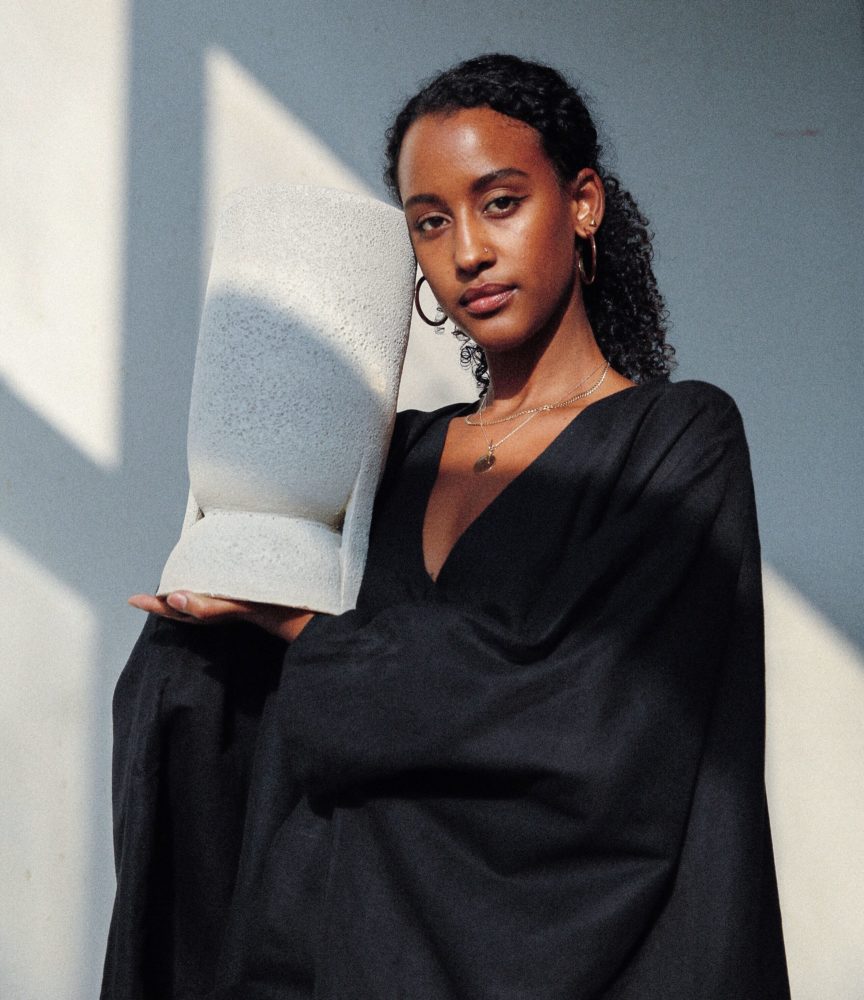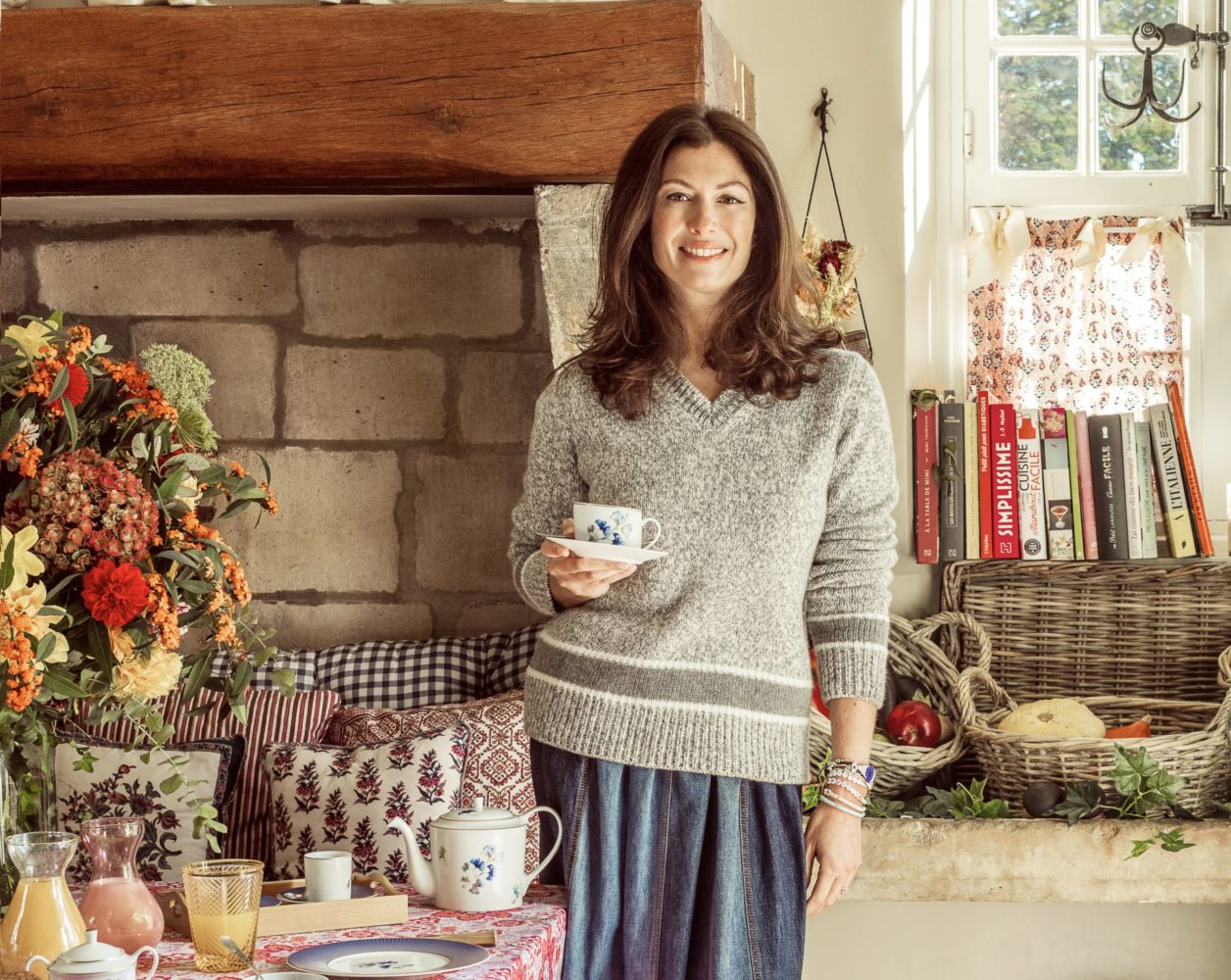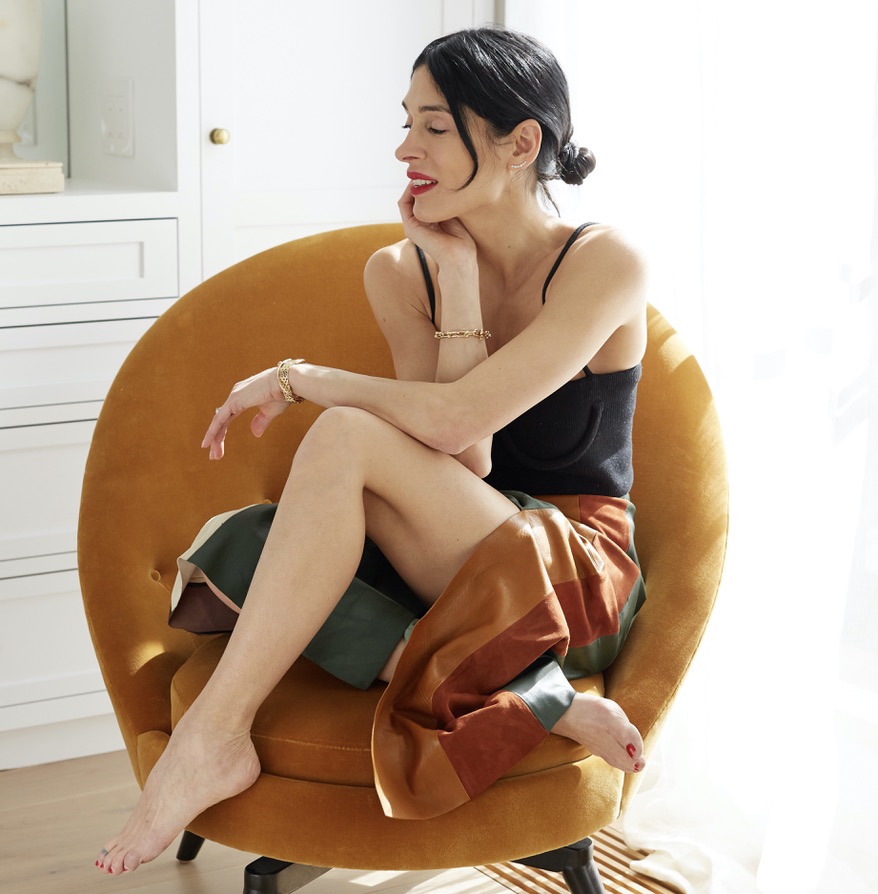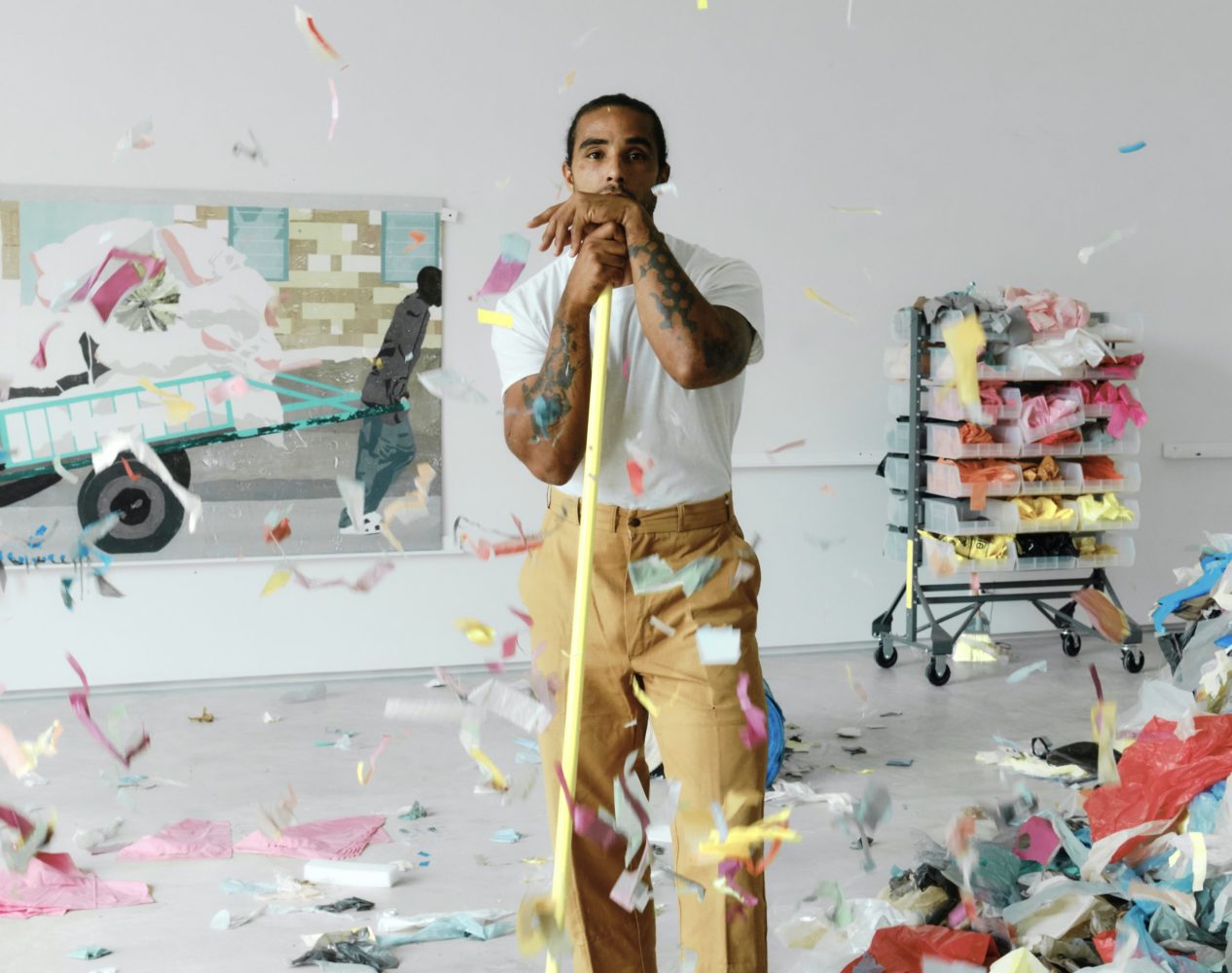Dina Nur Satti came to creating in clay after years of working professionally in a very different space. While pursuing a career that was more in line with the experience she had growing up in France and Kenya with her father working as a diplomat, she found herself in a community of artists. Inspired by their fulfilling pursuits, she started experimenting—first with dance and then music. But it was when she tried ceramics that things fully clicked.
Originally from Sudan and Somalia, Satti felt as though she was tapping into intergenerational knowledge, like she had been here before, making with clay from the earth, water, and fire. Continuing to study and learn from African art and pre-colonial African societies, at her studio Nur Ceramics she builds beautiful, energetic vessels for everyday, contemporary rituals.
Whitewall spoke with Satti about utilizing ancient methods of craft while bringing modern, minimalist forms into physical and collective experiences.
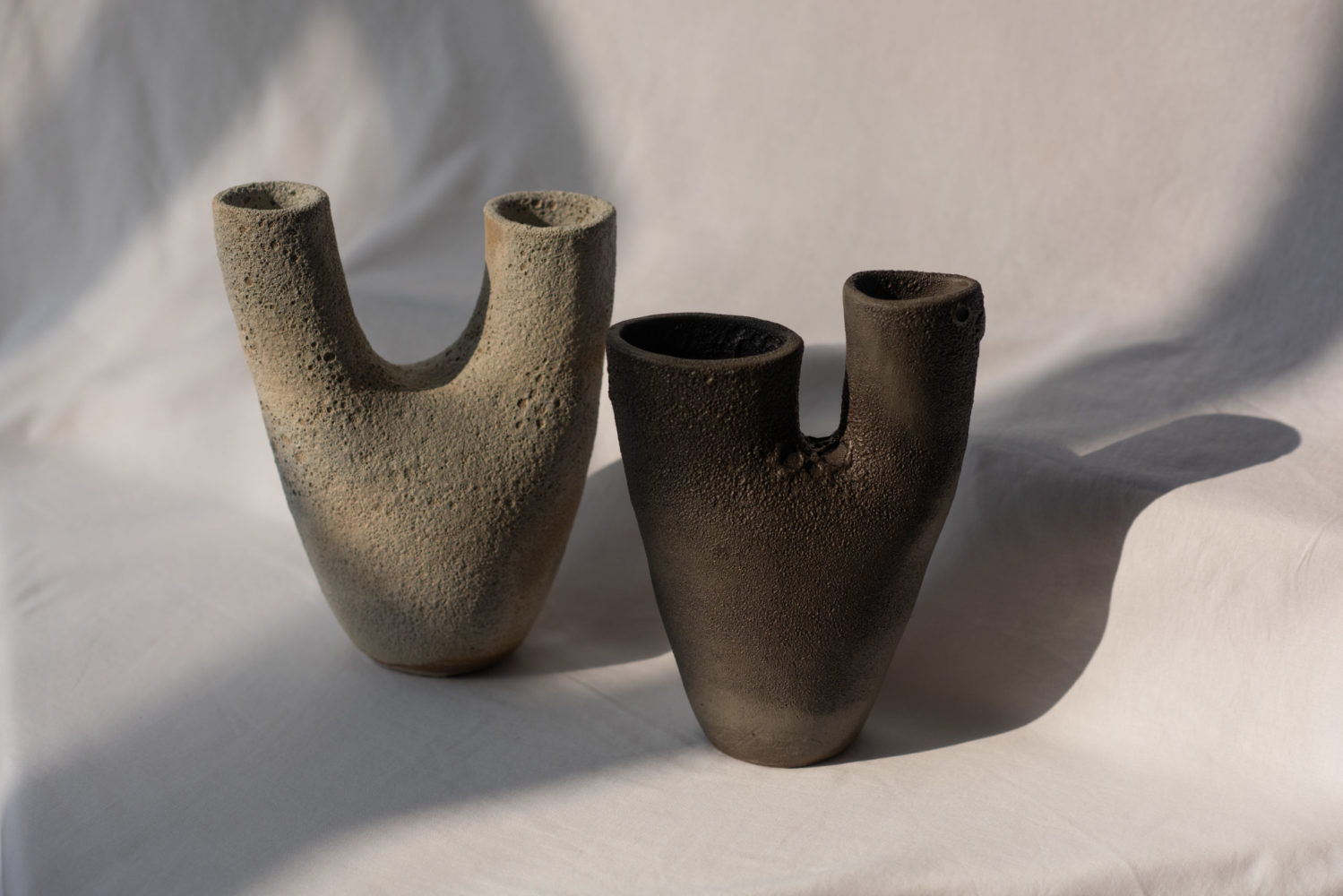
Courtesy of Dina Nur Satti.
WHITEWALL: You came to clay after a career outside of making. What drew you to ceramics?
DINA NUR SATTI: My exposure to art from when I was very young was a lot around music. My dad was a diplomat, but he had this community of painters and musicians that he was always around. We would kind of spend a lot of time going to listen to music and he would have these oud players and musicians come around.
I was working for a foundation for about seven years. During that time, I was pursuing my family’s humanitarian vocation. Then I started meeting, through different friends in Brooklyn, this community of world musicians and electronic musicians, and we started organizing events.
I started to understand the relationship of what it is to be devoted to art and what it is to communicate ideas through art. It was kind of this awakening, and I was learning a lot about music and culture. I saw people’s devotion to art, and I was always searching for that thing that was going to be my own.
Eventually, that thing came and clicked with ceramics. Within a few classes, I was like “Whoa, this is something really special.” After like six months, I left my job and took my savings and decided to set up a studio.
WW: I was reading an interview where you talked about how we can pass on these skills through generations. And throwing on a wheel or ceramics, there’s a lot of intuition there. Of course, there are teachers and skills and things you can learn, but even firing a glaze you don’t always know what you’re going to get. It’s such an intuitive artmaking.
DNS: Absolutely. You know, I was always fascinated by this idea of generational trauma, and I think in the last few years there have also been studies on, not only trauma, but being able to pass down knowledge. In anthropology they call it cultural memory—it’s that feeling of “Oh, I’ve been here before, I’ve done that before.” I started to experience that a lot.
It’s hard to say if maybe it was from when I was young, going to museums in Sudan and seeing these shapes, and they were hidden somewhere in my conscience and I was expressing them. But it happened to me really often in those early years when I started experimenting with shapes. I would pick up a book on ceramics and flip through the page and see I was creating such similar shapes to what my ancestors were probably creating.
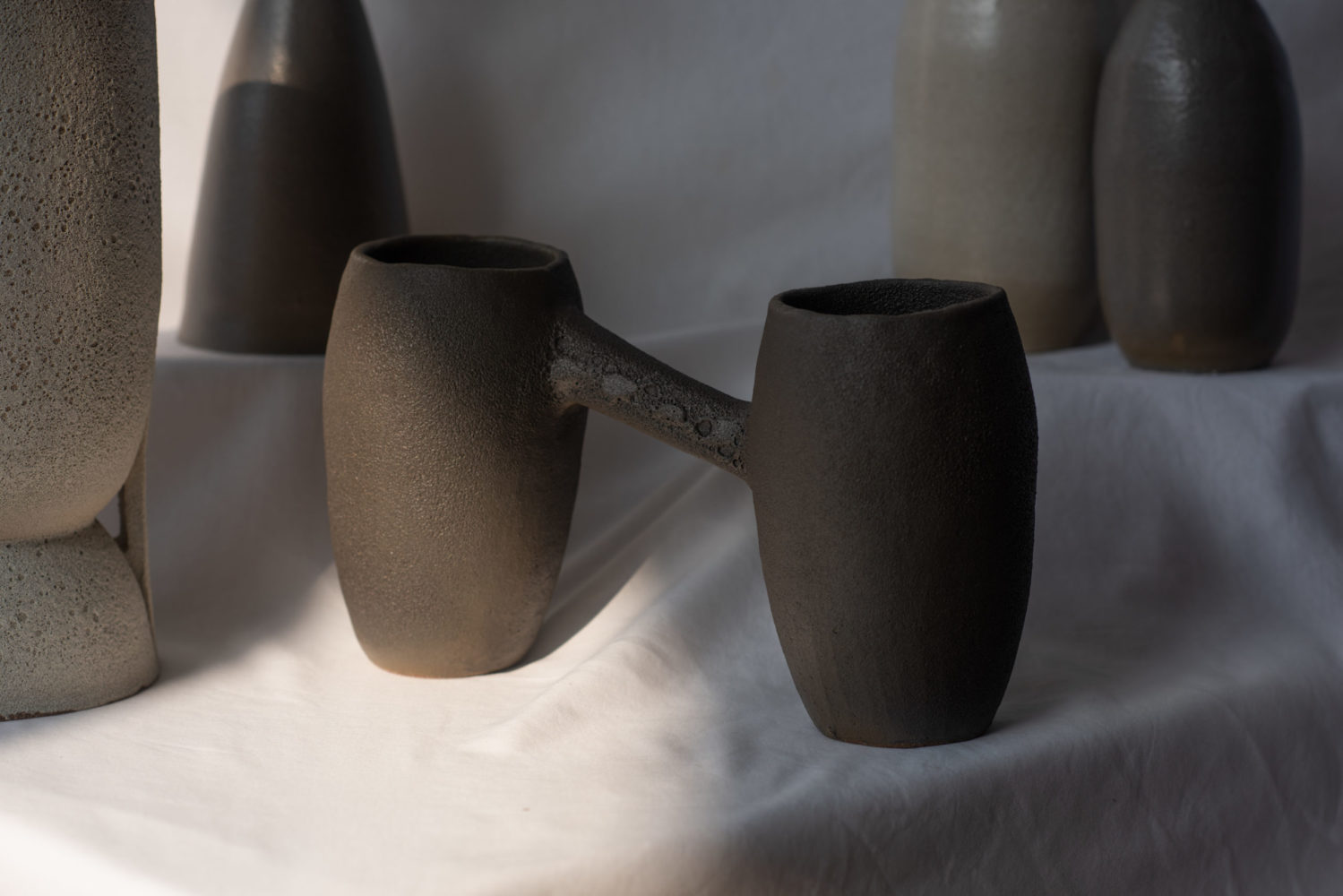
Courtesy of Dina Nur Satti.
WW: You have created a series of signature vessels, the Habba, Acacia, Zir, Lotus, and Footed Ritual bowl. Was it always your aim to create these vessels that had a ritualistic or communal aspect to them?
DNS: Absolutely. I think a lot of what draws me to ceramics is seeing them in a space. I think I’ve had to be very patient about allowing my technical skills to catch up to my vision, which is what you experience a lot as an artist. My ultimate vision is to continue to scale up the pieces and then create immersive experiences that combine music, food, adornment as a way to re-create an expression of a culture that we’re creating right now.
Of course, when you first start you’re dabbling with mugs and bowls, but for me, I wanted to switch very quickly into sculptures and pieces that almost help people transcend and feel like they were in an alternate space.
WW: How does that dictate the choice of clay you used, glazes, and finish?
DNS: I think it really reflects some of my own personal journey. I’m someone who loves minimalism, who loves clean lines, and I’ve been allowing myself to create in a much more organic way. Ceramics isn’t like dance or music where you can get lost in the craft. You do still have to be present. For me to feel like I’m in that place of flow, I can’t be too attached to making things too perfect. Even the glazes I’ve been developing allow for a lot of freeform application.
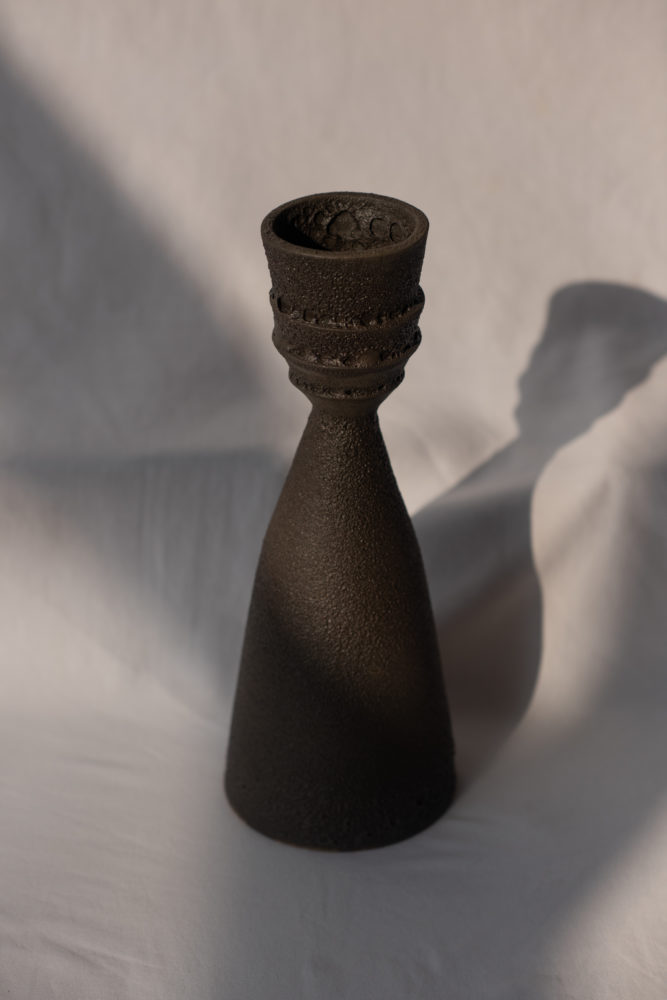
Courtesy of Dina Nur Satti.
WW: These vessels can be part of a multisensory experience. How can that both ground us and also be transcendental?
DNS: I really connect to the practice of dance—that’s where I had my first art form. I feel like, nowadays in the art world, we really have this disconnection from actual physical experiences with art. A lot of the time things are very static, so we’re seeing things in a vacuum and outside of a context, when I think a lot of the arts communicate with each other and there is this ongoing conversation—they influence each other.
What I wish to see more of is where things are not standing on a podium by themselves but in an environment where people can interact and experience it together in a more intimate way.
I remember having this moment with a friend where we were talking about art that has alchemy, and ceramics really is, because it’s earth, it’s clay. And then you use water to shape it, air to dry it, and fire to create the ceramic state. It’s the perfect chemical art; all of the elements, it’s pretty incredible.
If you’re creating art that is touching on very human, universal themes, it will resonate across the board. This is why certain artists have the capacity to move and affect everybody that comes across their art, because they’re really using these very primordial ideas. Martha Graham did it so beautifully with her dance, Noguchi also did it, Brancusi did it, Picasso. It’s talking to these very intrinsic ideas.
WW: Your pieces are imagined to be part of everyday rituals. How would you describe an everyday ritual?
DNS: There’s a whole kind of language to what the ancients called ritual. Because people think ritual is this very heavy thing. People think you go into a ritual and they’re like these ancient Catholic churches, people swinging incense, there’s dark music, it’s very intense. But ritual is also laughter and togetherness, and this feeling of catharsis. And bringing that about is redefining what ritual is—it’s really about coming together as a community and allowing the art and the experience to heal you.
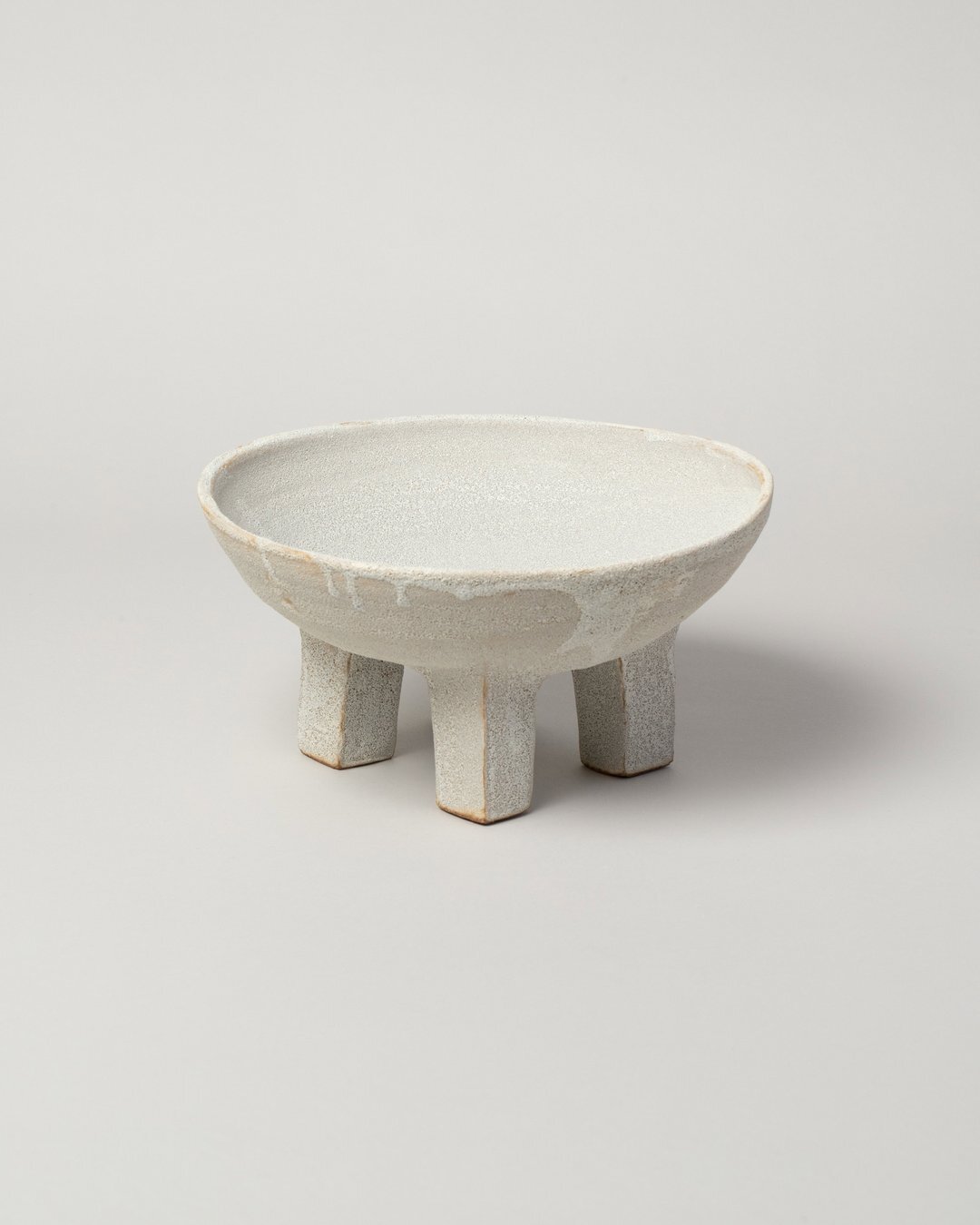
Courtesy of Dina Nur Satti.


